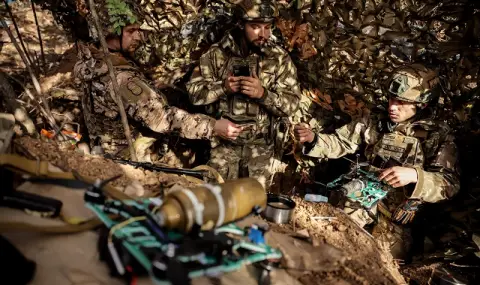Ukrainian forces continue to innovate in drone operations to maintain their technological advantage over Russia and achieve battlefield effectiveness.
This is noted in the daily analysis of the Institute for the Study of War (ISW).
The Commander of the Ukrainian Unmanned Systems Forces, Colonel Vadim Sukharevskiy, said in an interview with Radio Liberty published on February 3 that Ukrainian forces are working on developing new technologies but are not disclosing them as long as possible in order to maintain the technological initiative and prevent Russian forces from creating their own analogues.
Sukharevskiy reported that in 2024 The UAV forces have carried out over 220 strikes on Russian territory, using over 3,500 weapons. Sukharevskiy noted that Ukrainian forces carried out over 15 strikes on Buk-M3 and Tor air defense systems in December 2024 and January 2025, and noted that Ukrainian forces have intercepted Buk-M3s. 57 km from the front line in mid-January 2025.
Sukharevsky reported that the use of first-person view (FPV) drones by Ukrainian forces to hunt Russian reconnaissance drones has led to a tenfold reduction in the use of Russian reconnaissance drones.
Sukharevsky highlighted Ukraine's production of first-person view (FPV) drones and other drones made entirely from Ukrainian components, and said that Ukraine is working to develop a way to counter Russian forces with fiber-optic FPV drones and to produce its own fiber-optic drones.
On February 3, Ukrainian Commander-in-Chief General Oleksandr Syrsky said that the Ukrainian military continues to increase the number of drone systems in formations and units. of the Ground Forces, the Airborne Forces, the Marine Corps, and the Unmanned Systems Forces.
ISW continues to assess that Russian and Ukrainian forces are engaged in a technological race for offense and defense to adapt and modernize their strike and combat capabilities with unmanned aerial vehicles, and that Ukraine’s ability to implement technological adaptations on a large scale ahead of Russian adaptations is critical to Ukraine’s ability to offset Russia’s quantitative advantages in materiel.
On February 3, Ukraine’s Supreme Commander-in-Chief General Oleksandr Syrsky stated that Ukraine had begun implementing organizational reforms to transform the Ukrainian Armed Forces into a "corps structure".
The use of corps structures is not entirely new to the Ukrainian Armed Forces, as they have been using corps since 2023. In 2023, Ukraine formed the 9th and 10th Army Corps and restructured its reserve corps into the 11th Army Corps, and Ukraine is currently forming the 4th Army Corps.
Further restructuring to systematically form an echelon between Ukraine's numerous individual brigades and the various operational groups of Ukrainian forces, as well as the creation of appropriate command staff headquarters in this new intermediate echelon, is likely to improve the command and control of Ukrainian brigades and help facilitate more effective operations.
In January 2025, Russian forces continued to suffer heavy losses despite a slower pace of advance compared to previous months in late 2024.
On February 3, the Ukrainian Ministry of Defense (MOD) reported that in January 2025 Russian forces suffered 48,240 casualties - more than three Russian motorized rifle divisions, making January the second-highest month of casualties since Russia's full-scale invasion of Ukraine in February 2022.
ISW has monitored geolocation data to estimate that Russian forces gained approximately 498 sq km in January in Ukraine and Kursk Oblast, or approximately 16.1 sq km per day. Available data suggests that Russian forces suffered approximately 96 casualties per square kilometer of territory captured.
The Ukrainian MoD reported that Russian forces suffered 48,670 casualties in December 2024 - the highest monthly casualty rate since the start of Russia's full-scale invasion - and ISW estimated that Russian forces gained a total of 593 sq km in December 2024.
The reduction in captured territory by approximately 100 sq km between December 2024 and January 2025, combined with a similar monthly casualty rate, suggests that Russian forces are suffering the same high casualties, despite making less territorial gains in the near term. ISW previously noted that Russian advances slowed from November 2024 to December 2024.
ISW previously assessed that Russian military command likely suffered record levels of personnel losses since September 2024. until November 2024 to facilitate greater territorial gains, but it remains unclear whether the Russian military command will be willing to suffer such losses if the pace of Russian advance continues to slow as Russian forces advance towards more heavily defended settlements such as Pokrovsk.
Ukrainian forces recently advanced near Borova, and Russian forces recently advanced near Kupyansk, Borova, Liman, Chasiv Yar, Toretsk, Pokrovsk, Kurakhovo, and towards the Dnieper.
The Russian government is expanding the federal program "Time of Heroes", which aims to appoint Kremlin-selected veterans to state positions. The initiative also aims to integrate occupied Ukraine into Russia.
